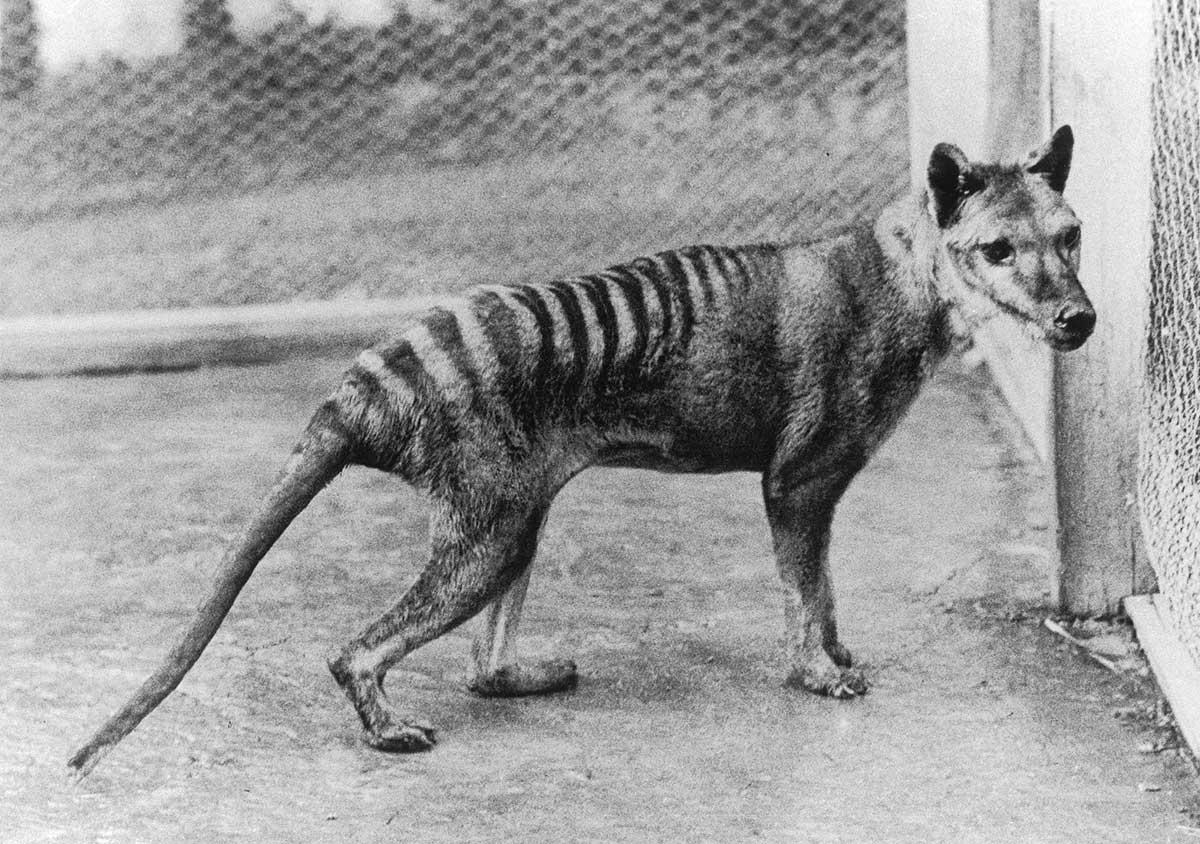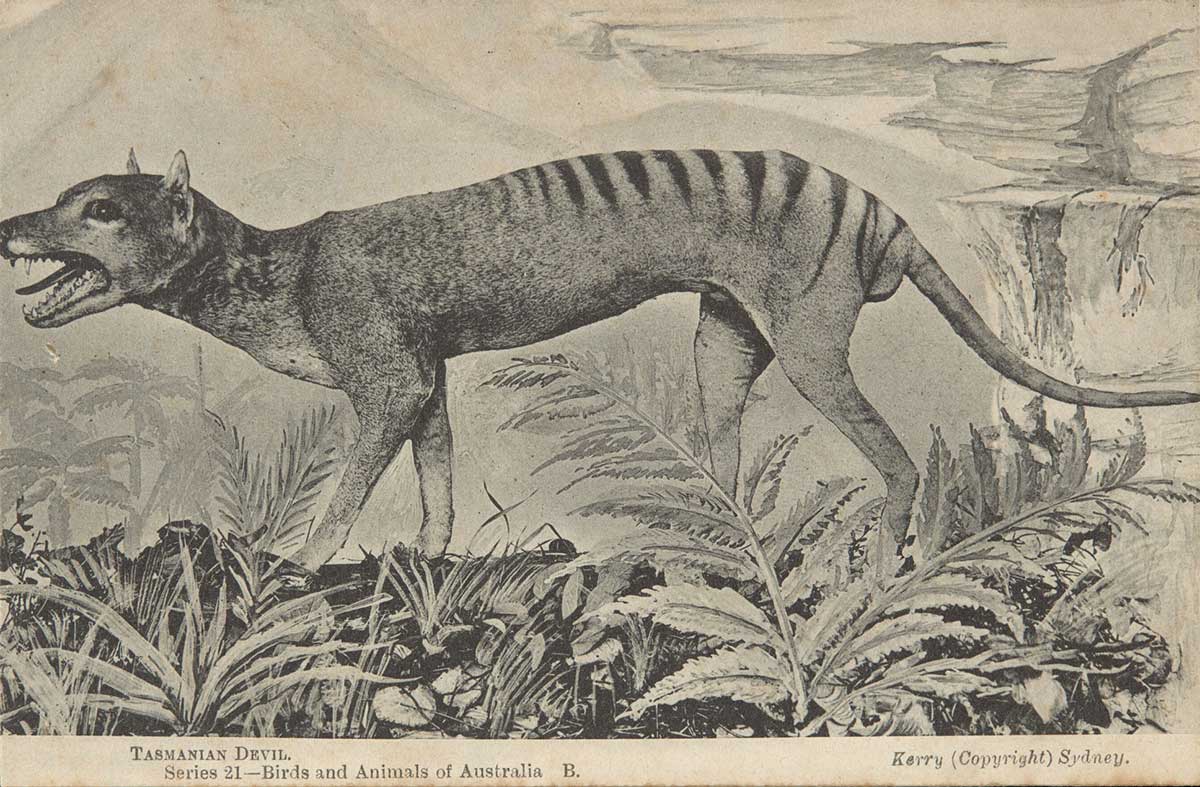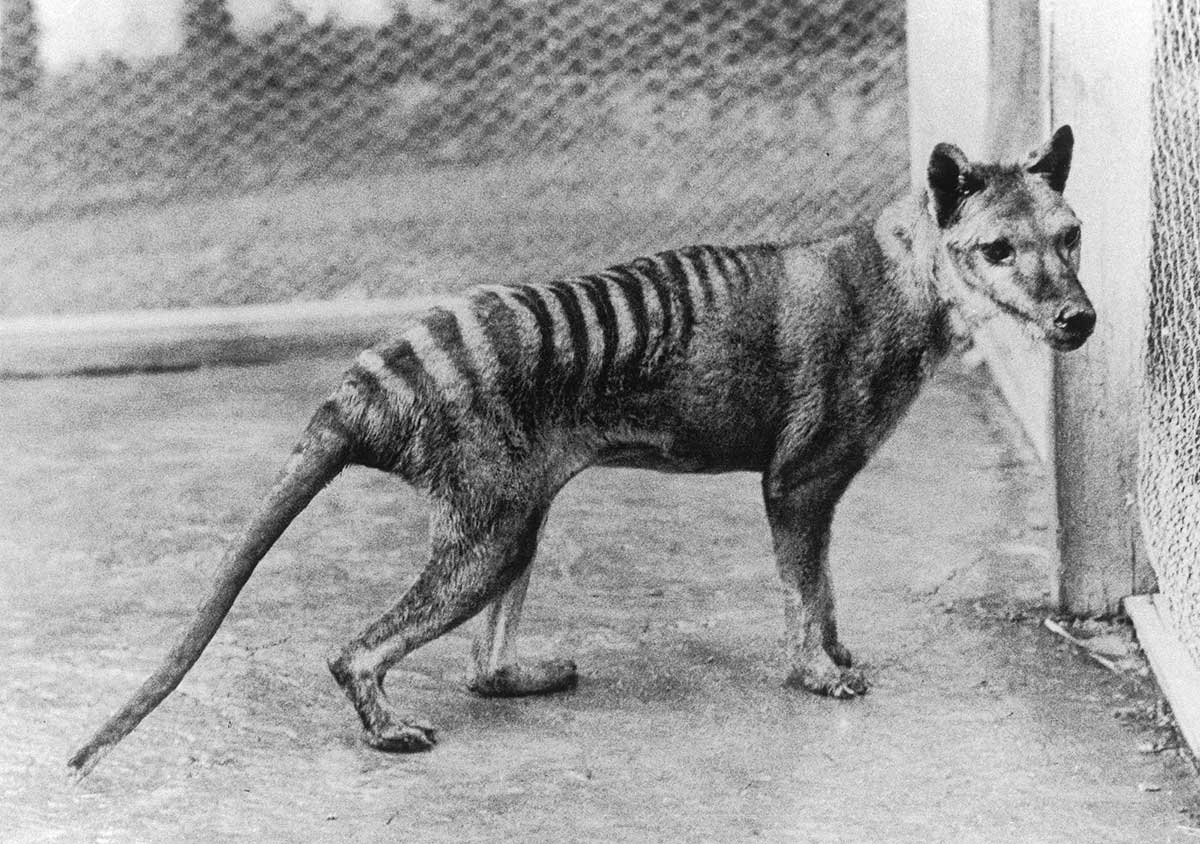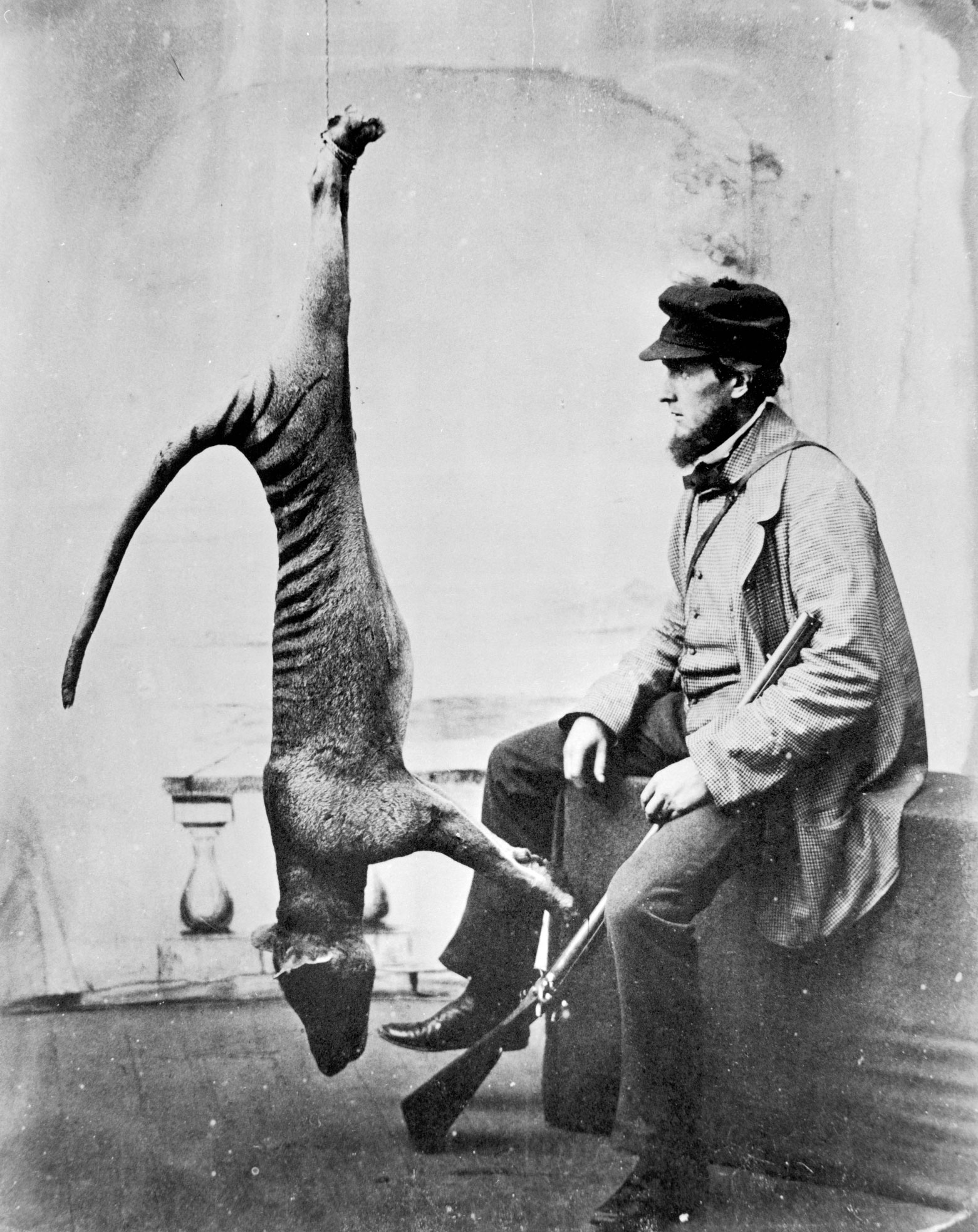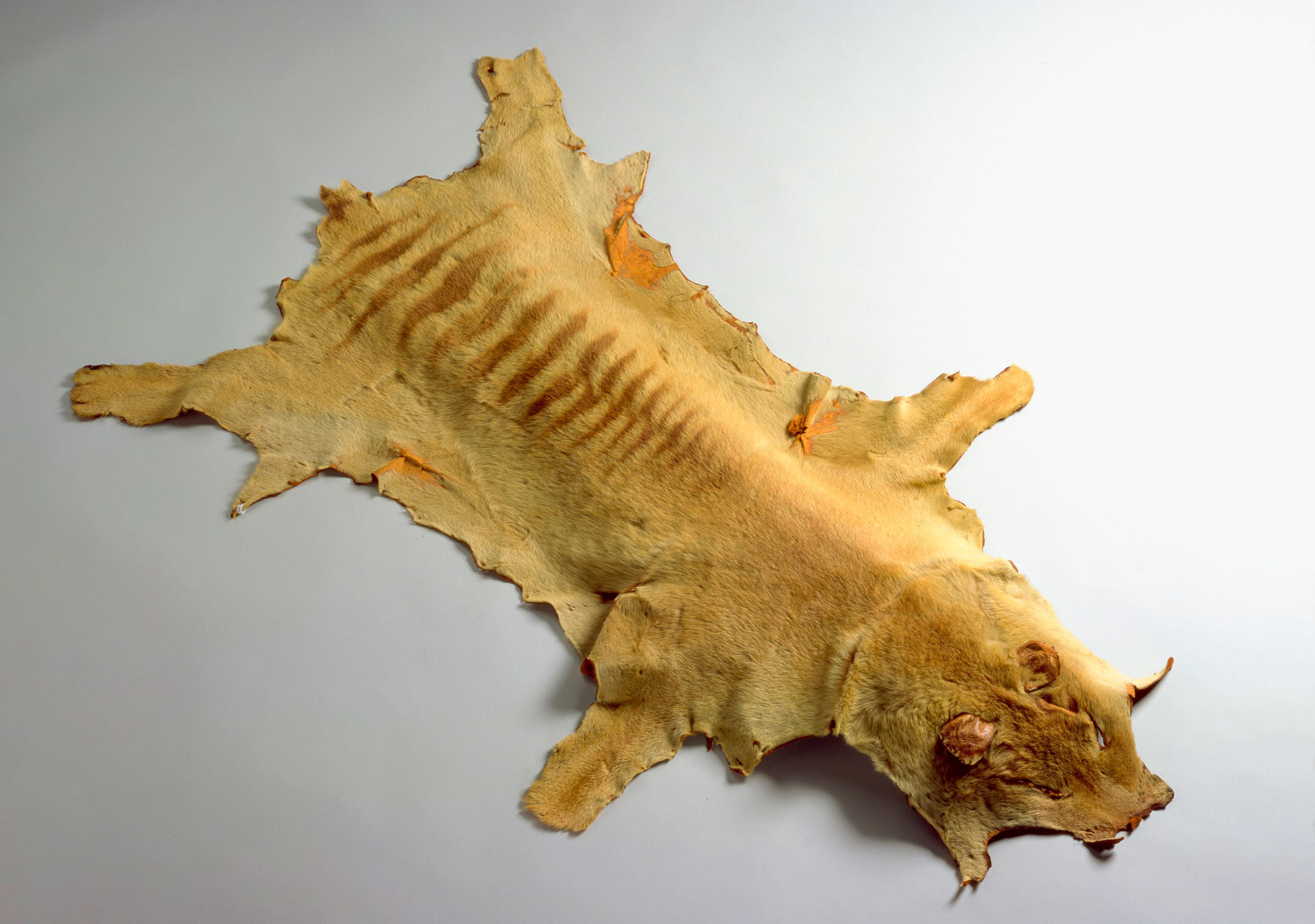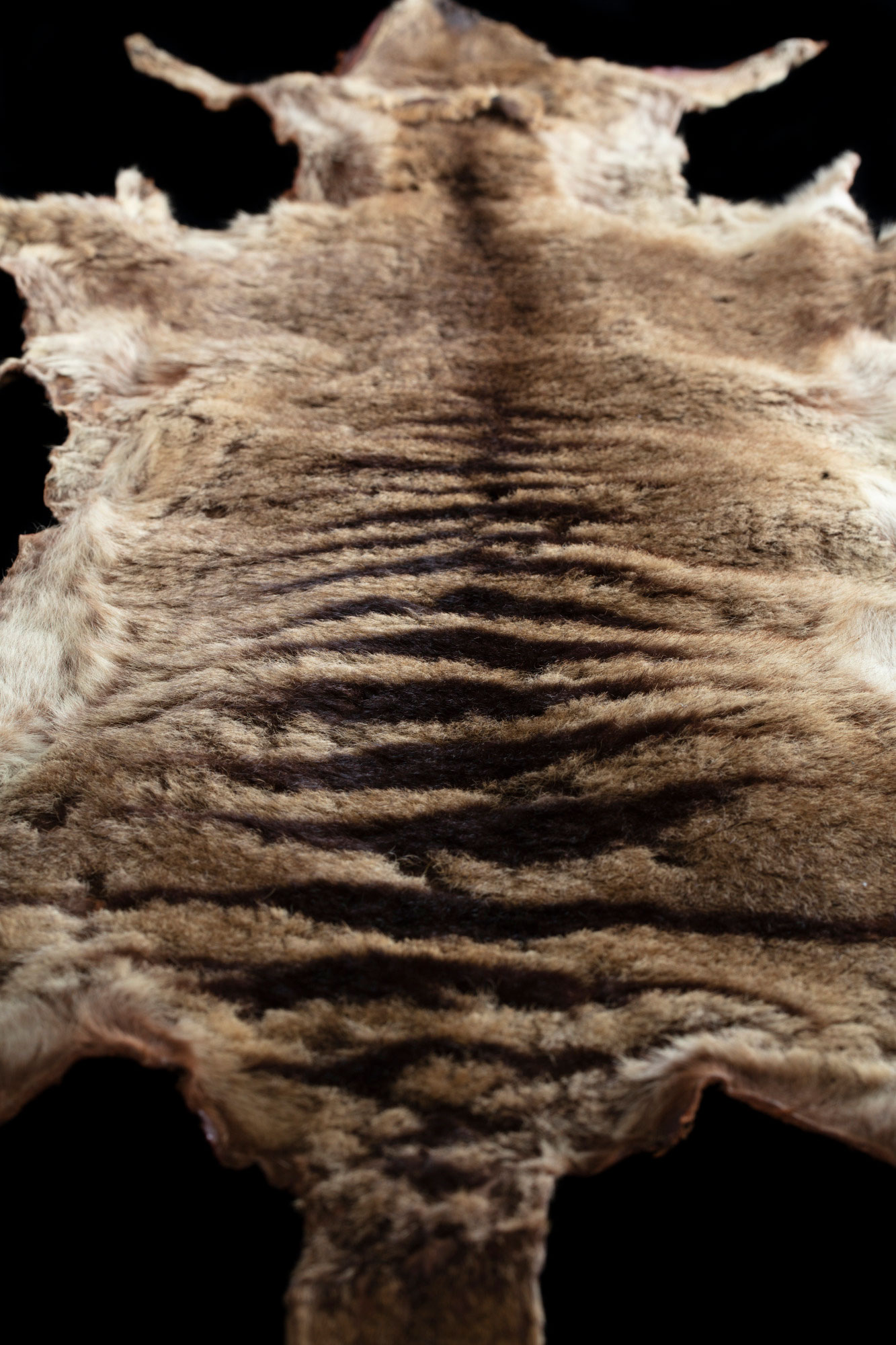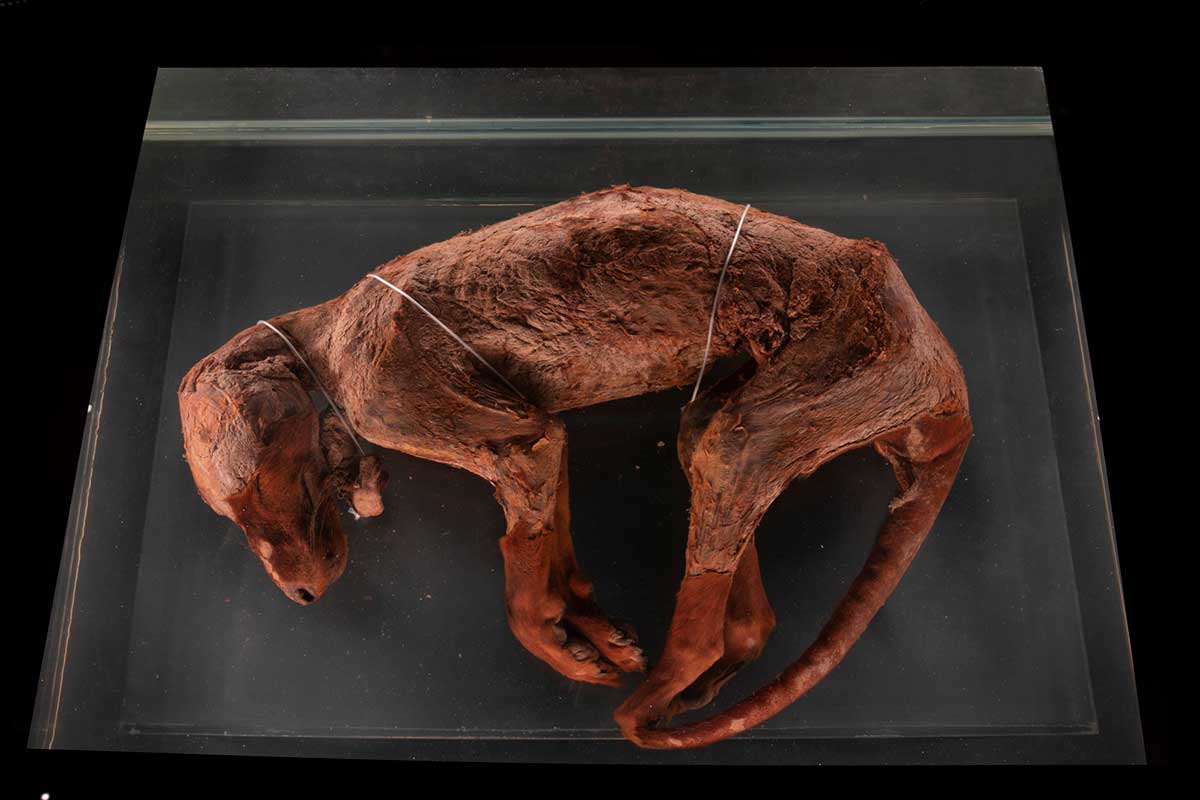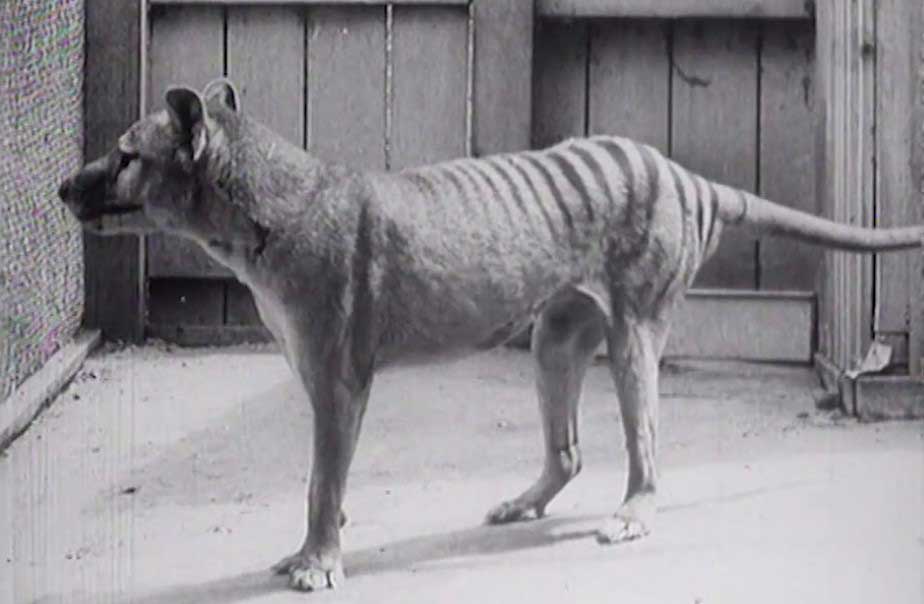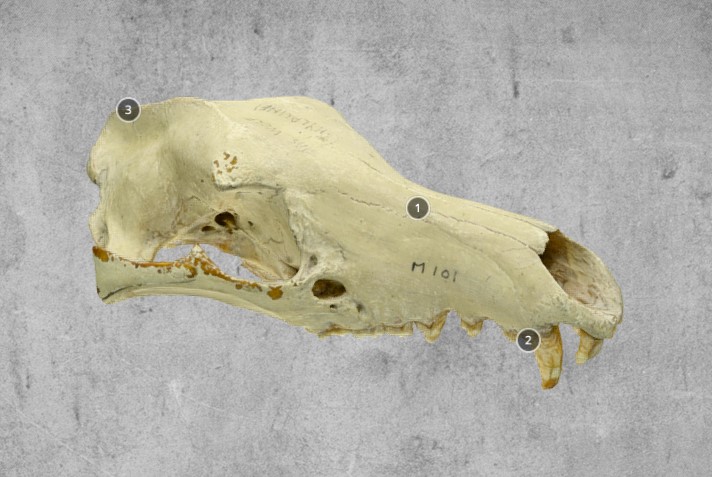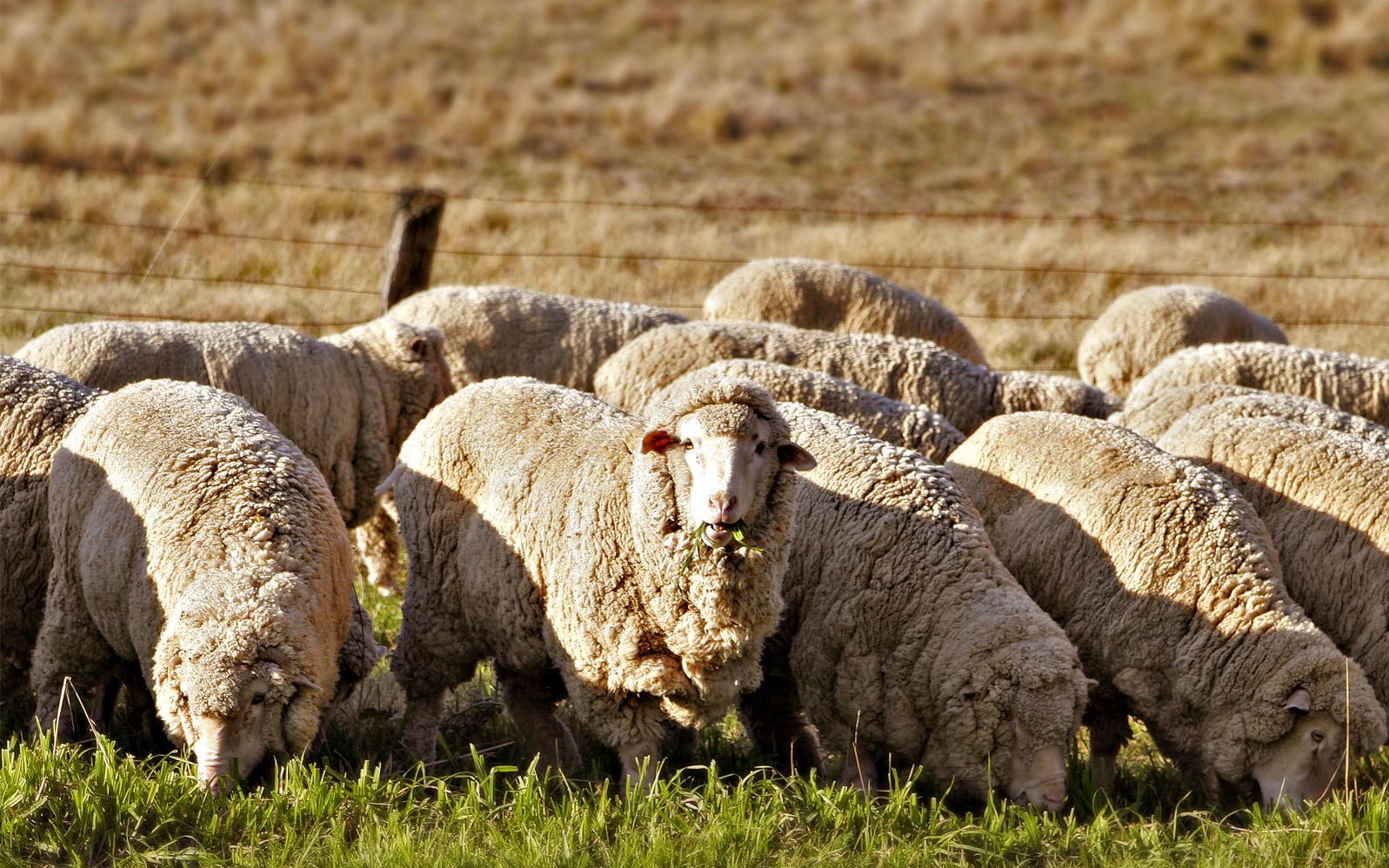The last thylacine
1936: Tasmania’s thylacine becomes extinct
The last thylacine
1936: Tasmania’s thylacine becomes extinct
In a snapshot
On 7 September 1936 the last known thylacine died at Beaumaris Zoo in Hobart in Tasmania. The species had been given protected status just two months before. Around 5,000 thylacines were in Tasmania when Europeans settled there. But hunting combined with habitat destruction and introduced disease quickly led to the extinction of the species.
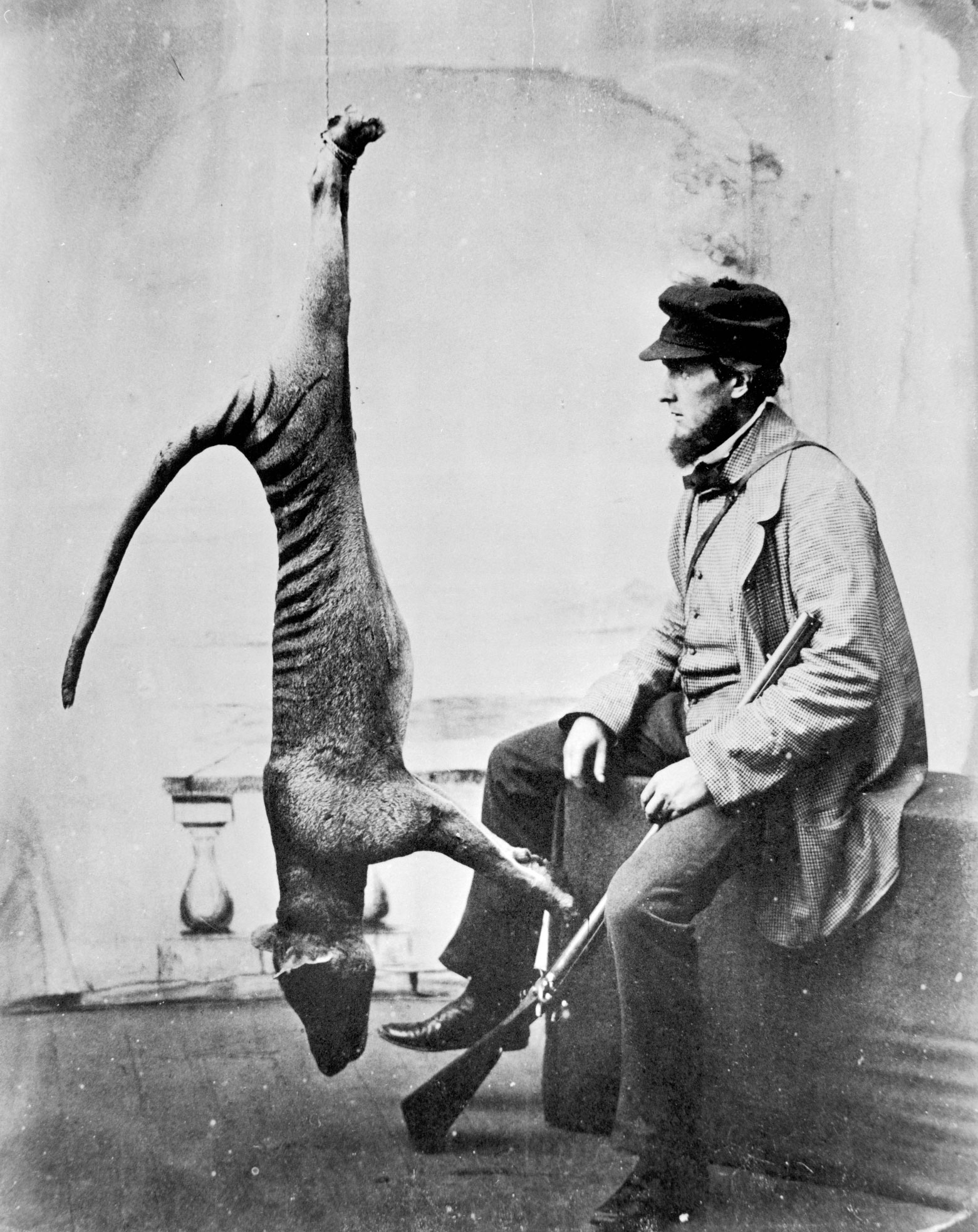
 Can you find out?
Can you find out?
1. Why is the thylacine often called the ‘Tasmanian tiger’?
2. Why did the Tasmanian colonists hunt the thylacine to extinction?
3. Where did the last known thylacine die?
What is a thylacine?
The thylacine was the world’s largest marsupial carnivore. Its scientific name, Thylacinus cynocephalus, means ‘dog-headed pouched one’. It looked like a medium-sized dog, with yellowish-brown fur and a stiff tail. Female thylacines had a pouch for carrying their young.
The thylacine is commonly known as the ‘Tasmanian tiger’ because of the dark stripes on its back. Although it had a fierce reputation as a hunter, the thylacine was partly nocturnal and quite shy, so it usually avoided contact with humans.

The fossils of thylacines have been found in Papua New Guinea, across the Australian mainland and in Tasmania. But about 2,000 years ago the thylacine became extinct everywhere except Tasmania. Partly this was because thylacines had to compete for food with dingoes, which arrived in Australia between 5,000 and 10,000 years ago. Around 5,000 thylacines lived in Tasmania when Europeans settled there.
Why were thylacines hunted?
The first European settlements were set up in Tasmania in the early 1800s. Colonists cleared large areas of land for sheep and cattle farms. They believed that thylacines were preying on their farm animals. Although it is likely that feral dogs were mainly responsible for killing farm animals, the colonists began to hunt thylacines.
As early as 1830 farmers paid hunters who could prove that they had killed a thylacine. In 1888 the Tasmanian Government began paying people a bounty of £1 for killing a full-grown thylacine and 10 shillings for killing a thylacine pup.
At least 3,500 thylacines were killed by hunters between 1830 and the 1920s. The number of thylacines also fell because of exposure to new diseases, and because they had to compete for food with introduced wild dogs. Also, as the colonists’ farms expanded the thylacines’ natural habitat was destroyed.
Research task
Tens of thousands of years before European colonisation a group of Australian animals known as megafauna became extinct. What were megafauna? What are some of the different theories that explain why they became extinct?
‘Has anybody seen a Tasmanian tiger lately? This is a question which the Animals and Birds Protection Board will shortly cause to be circulated throughout the state. Fears exist that this unique specimen of fauna may now be extinct… Mr A.W. Burbury said there was no reliable evidence that the Tasmanian tiger was now in existence.’
The Examiner (Launceston), 10 February 1937
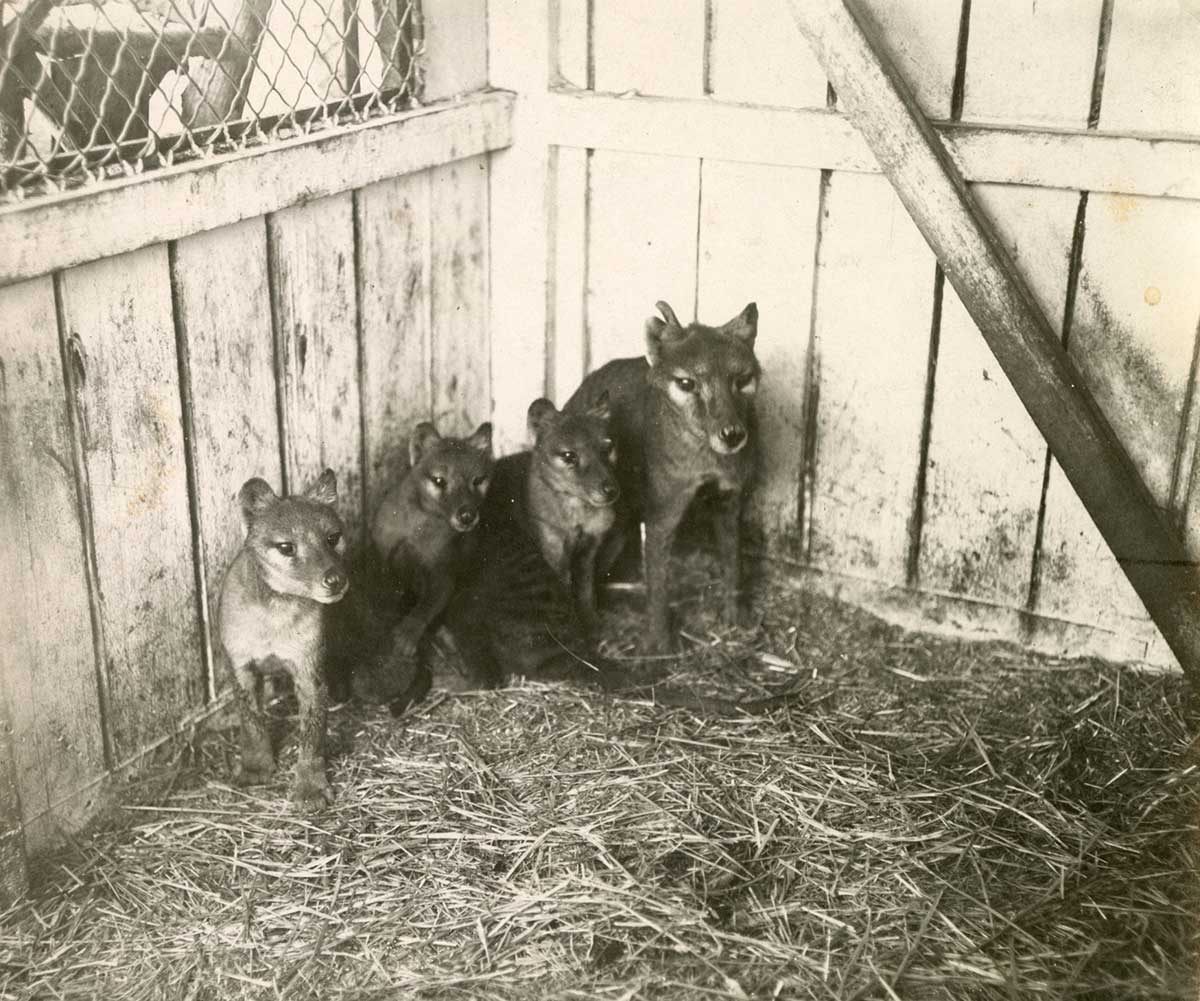
The last thylacine?
The last known shooting of a wild thylacine took place in 1930. By the middle of the 1930s sightings of the thylacine in the wild were extremely rare. Scientists and some members of the public began to argue that the thylacine should be protected.
The species was given protected status in 1936, but this action came too late. Just 59 days later, on 7 September 1936, the last known thylacine died in Beaumaris Zoo in Hobart.
Research task
The thylacine is not the only animal to become extinct since European colonisation. Can you find out roughly how many animals have become extinct in Australia since 1788?
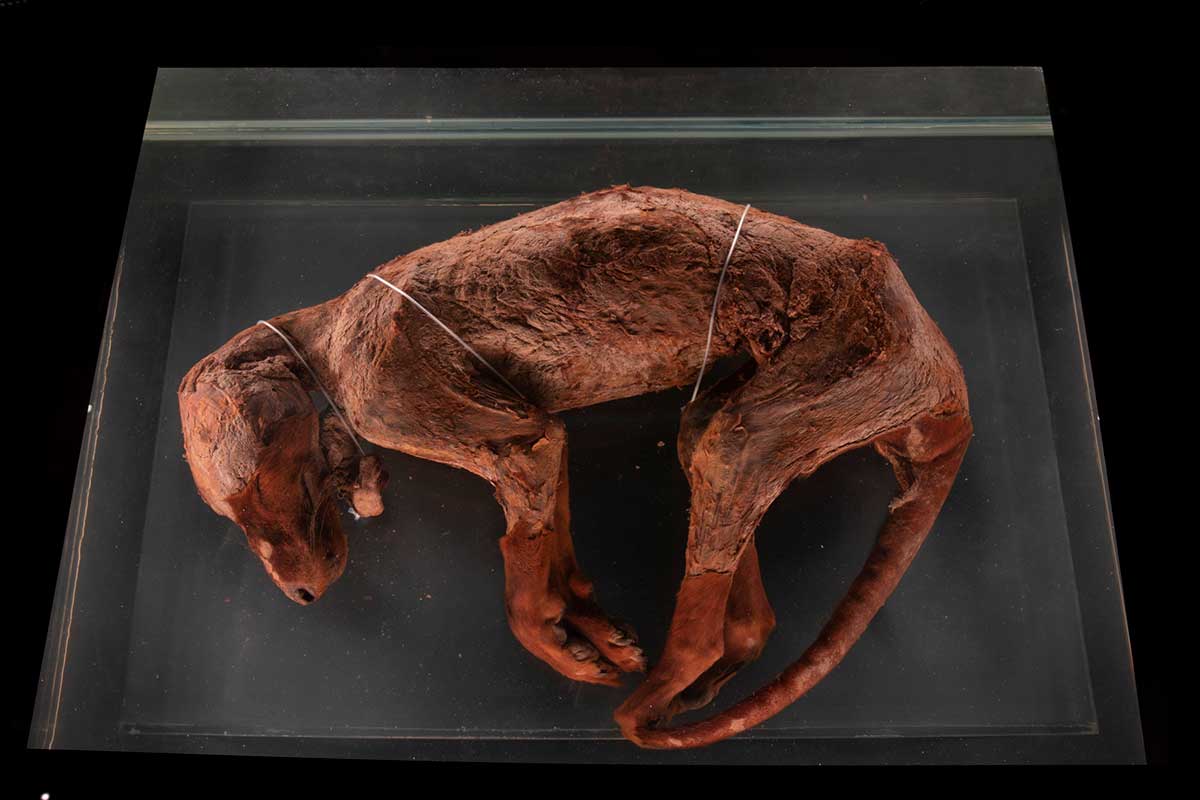
Since then many expeditions have been organised to search for the thylacine in Tasmania. Thylacine sightings are still reported today, but there is no clear evidence that the animal still exists. The thylacine was officially listed as extinct in 1986.
Today some scientists are researching whether the thylacine can be cloned and brought ‘back from the dead’, but this is a very controversial idea. Some people argue that we should bring back animals if humans caused their extinction, but others believe we should focus on protecting endangered animals.
Read a longer version of this Defining Moment on the National Museum of Australia’s website.
 What did you learn?
What did you learn?
1. Why is the thylacine often called the ‘Tasmanian tiger’?
2. Why did the Tasmanian colonists hunt the thylacine to extinction?
3. Where did the last known thylacine die? What was his name?






